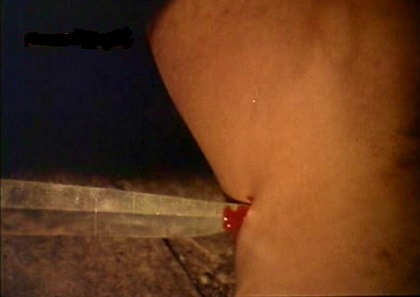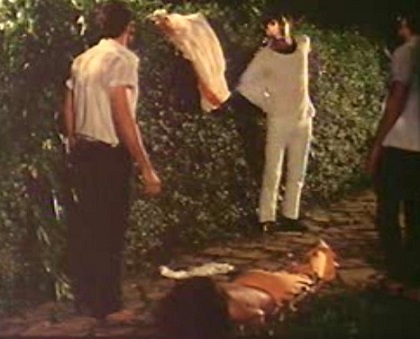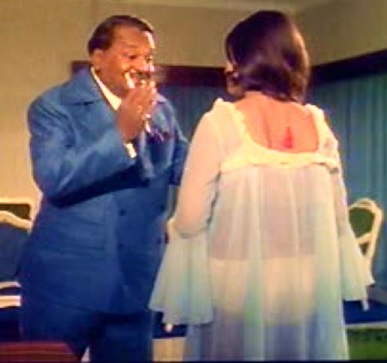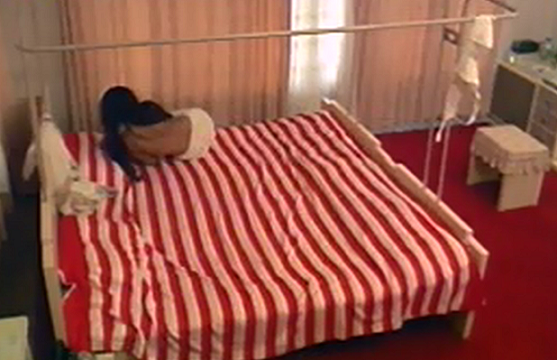Zaroorat (1972)
This is a collection of articles archived for the excellence of their content. Readers will be able to edit existing articles and post new articles directly |
Contents[hide] |
Cast and crew
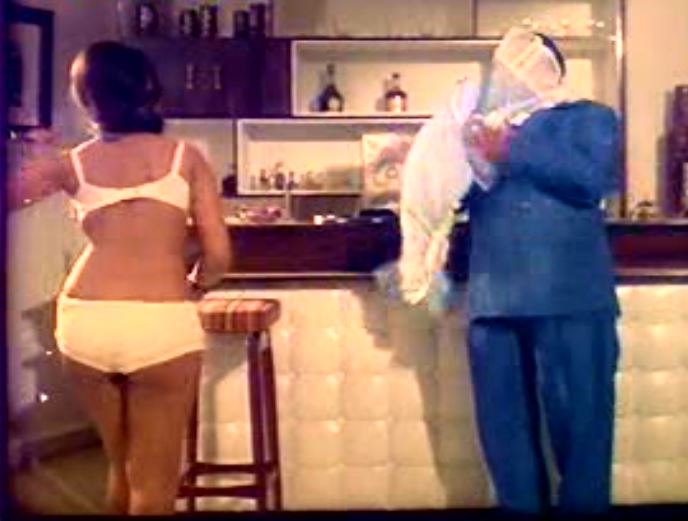
Now that’s a girl who stands up for her ideals. If not logic.
Writer and Director: B.R. Ishara
Producer/ editor: I.M. Kunnu
Music: Brij Bhushan
Cast: Reena Roy and Vijay Arora (it was the first film for both), with Danny Denzongpa (spelt Denzoppa in the credit titles)
Highmindedness
Zaroorat is set amidst lower middle-class poverty, unemployment (an issue championed by art filmmakers since Baharon ke Sapne [1967]), tragedy and youthful idealism. So, if amidst all this seriousness you get to see a bit of flesh you don’t feel guilty about it. In other words, Indian filmmakers normally felt compelled to bittercoat sex.
Excuse for nudity
At least officially Mr. B.R. Ishara was a maker of ‘art’ films. The patrons of India's 'new wave' said so. Therefore, lesser mortals agreed.
The ‘new wave’ of Hindi-Urdu cinema is supposed to have begun around 1969 with Mrinal Sen’s Bhuvan Shome. Its institutional patron was the government-owned FFC (Film Finance Corporation), which was headed by Burjor Khurshedji Karanjia, who was also the editor of India’s then biggest selling English-language fan (not scholarly) film magazine, Filmfare, which, in turn, was owned by The Times of India.
(Before Bhuvan Shome there had been stray art films like Sunil Dutt's single-actor Yaadein (1964)> They used to be called 'experimental' films. What the FFC did was to create a trickle in 1970, which became a wave in the early 1970s, till the private sector (notably Blaze Advertising) started sponsoring tales of poverty and rural oppression, beginning with Shyam Benegal's Ankur (1974). Then for a while the FFC and the Karnataka Government's film wing co-existed with the private sector. First Karnataka gave up.Then FFC became the NFDC and slowly grew tired.)
With both The Times of India and Filmfare bracketing his previous film Chetna (1971) among art films (artistic highlight: the camera zoomed into a dying call girl’s teardrop), people had a high-minded excuse to see that film (which showed a bit of Rehana Sultan’s legs). In another era it might have been called a B-film.
Zuroorat certainly was one. And by the time it was made even The Times of India and Filmfare had stopped hailing Mr. Ishara as the next Goddard. It was unfair and unjust of the two publications to have abandoned Ishara, especially when his Zaroorat had scaled new peaks of artistry: In the copulation sequence, instead of showing two humans in a clinch, Ishara made the the stripes of the bedcover on which they would have had sex (shown on this page in red and white)change their colours in rapid succession. There are no humans on that bedcover (which was an act of kindness on Ishara's part, for who wanted to see Asit Sen having sex).
The film’s excuse for getting young Reena Roy to strip to the waist was that her character needed the money to help her ailing husband.
Goddard was impenetrable to most viewers. So was the logic used in Zaroorat. The Reena Roy character gets a job while her male friends with the same degrees remain unemployed. Her boss Mr Vyas (Asit Sen) calls her home. He pleads and tells disarming lies to get her to wear a nightie—a full-length nightdress, though translucent.
Once she is in the ‘nightie’ he asks her to remove it. She refuses. He reminds her that he is paying her Rs.450 a month (more than Rs20,000 at 2014 prices). She says that she will not strip even if he pays her Rs,5,000 a month. The argument gets heated. Vyas keeps on with his indecent proposal and Reena Roy with her angry, disgusted refusal.
When the fact that the nightie belongs to Mr Vyas becomes an issue, she pulls it off right then and there, pushes it into his hands and walks away in her lingerie.
The audience blesses her for her principled refusal to wear a dress that does not belong to her. Jean-Luc Goddard would, doubtless, understand her logic as well
See also
Adult content in Bengali cinema Adult content in Hindi-Urdu cinema Adult content in Kannada cinema Adult content in Malayalam cinema Lesbian themes in Bengali films Lesbian themes in Hindi-Urdu films Lesbian themes in Malayalam cinema
Brahmachari (1938) Mera Naam Joker Mr. Singh, Mrs. Mehta Ram Teri Ganga Maili (1985) Satyam Shivam Sundaram (1978) The Cloud Door/ Baadal Dwar Trishagni Zaroorat (1972)
